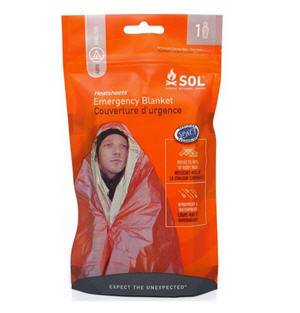
Kayaking in the winter can be very enjoyable but it does present risky situations that you must be prepared for. Consider the unpredictability of the cold weather and how it presents many challenging survival scenarios to winter paddlers and kayak anglers. One of the most helpful items which is seldom discussed is a cold water safety kit. Before you put your kayak or canoe in the water prepare for safety and make a cold water emergency bag.
 |
| Ascend Paddling Fishing Life Jacket |
First you should try to always go out with others or paddle with at least one partner and stay near them. Have a radio, EPIRB (Emergency Position Indicating Radio Beacon), or cell phone with signal whenever possible to call for help if needed. Like hiking, make sure someone knows when and where you're going out. Watch the weather forecast and always wear your life jacket or paddling vest.
A cold water emergency bag is in case you end up in the water when water temps are 50 degrees Fahrenheit and below. Many people will think about staying and fishing. Others will wait for their clothes to dry. The reality is, neither of those ideas is good. You will start the journey towards hypothermia quickly. Both of them could actually kill you!
![]() Tip: How to Prepare Yourself for Winter Kayak Paddling
Tip: How to Prepare Yourself for Winter Kayak Paddling
At water temperatures below 50, the human body can seize up completely in less than half an hour. Obviously, you won’t stay in the water if you fall in but staying in wet clothes can have the same effect.
 |
| Ascend Heavy-Duty Round-Bottom Dry Bag |
How Can You Avoid the Cold Water Grimm Reaper?
Have some supplies on hand: My cold water emergency bag consists of a waterproof drybag, a fire starting flint with wax starters, a bath towel, cold weather jacket, dry thermal underwear, ski bibs, wool socks and a knit beanie. I keep them in my truck if I am fishing close to shore and in the dry bag on the kayak if I am far away from the truck. This pack should be your first thought if you find yourself soaked.
- Waterproof drybag
- Fire starting flint with wax starters or waterproof fire starting compound
- Bath towel
- Cold weather jacket
- Thermal underwear or base layer
- Ski bibs
- Wool socks
- Lightweight emergency survival blanket
- Knit or Fleece beanie or hat
Live Fire Gear Emergency Fire Starter Demo video - find Live Fire Gear Emergency Fire Starter at Bass Pro Shops here
If You're Wet and Close to Your Vehicle
Start the vehicle and put the heater and vents on full blast. Next, you need to strip. Get all your wet clothes off. Dry off as much as you can with the towel and sit with all the heater vents blowing on you. The object here is to stabilize your core body temperature. Once you are dry the next step is to remove the towel and get dressed. Start with the wool socks and then the thermal underwear. Next is the ski bibs, jacket, and cap. An extra pair of dry boots or shoes is good but not as necessary as the others. These layers will help keep your body temp up. If you don't stop chattering after a couple of minutes open the jacket to let the hot air from the vents get to your chest. It is important to keep your heart from slowing too much.
![]() For some winter layering recommendations, you can check out my article: What Not to Wear in a Kayak Fall and Winter for the best options.
For some winter layering recommendations, you can check out my article: What Not to Wear in a Kayak Fall and Winter for the best options.
Tip: 6 Common Questions About Dressing for Cold Weather![]()
 |
| Heatsheets Adventure Medical Emergency Blanket |
If You Find Yourself Some Distance Away From Your Vehicle
Get to the nearest shoreline and use your fire starter and flint. You'll need to quickly gather anything you can and start a shoreline campfire. From there, stripping, drying off, and warming up follow the basic steps above. If you cannot find any firewood, sticks, or burnable material, you can strip, towel off, and redress in the dry clothes. Once you've done that, find a spot protecting you as much as possible from the wind, sit cross-legged, cross your arms, and shove your hands in your armpits. Lean over and exhale onto your chest with each breath. This will concentrate your body temp to your core and allow for less heat to escape out of your clothes. The temptation is to exercise to get blood flow going but when your body is in shock from the cold your hands and feet will give out quickly and go numb as the heart tries to reallocate resources to the lungs and brain, reducing blood flow to extremities. Packing an emergency blanket like the lightweight 2.5 oz Heatsheets Adventure Medical Kits S.O.L. blanket helps you survive the outdoors longer by providing protection when you need it.
Hopefully, you'll never need this advice but prepping for the worst will increase your survival chances in case of an accidental dip on your wintertime outing.
![]() Tip: How to Survive a Fall Into Freezing Water
Tip: How to Survive a Fall Into Freezing Water
HeatSheets Adventure Medical Kits S.O.L. blanket demo video - find the HeatSheets Adventure Medical Kits S.O.L. blanket at Bass Pro Shops here
- 3742 views

